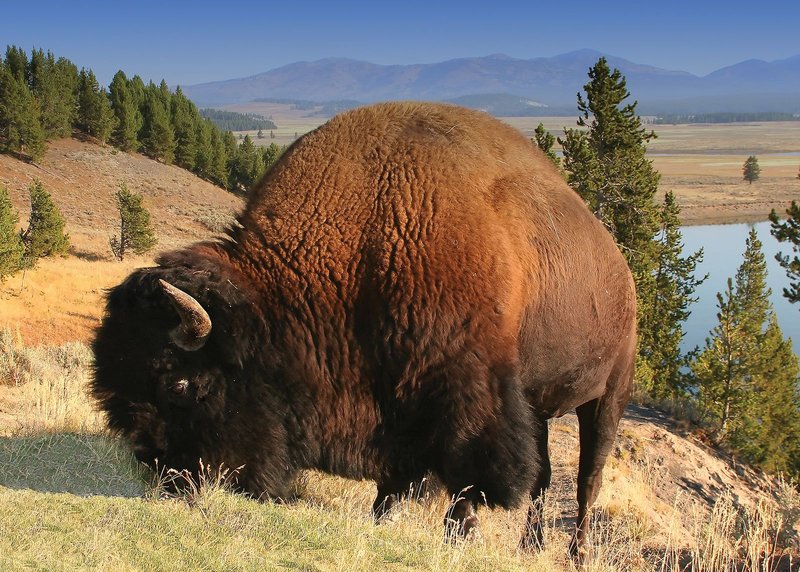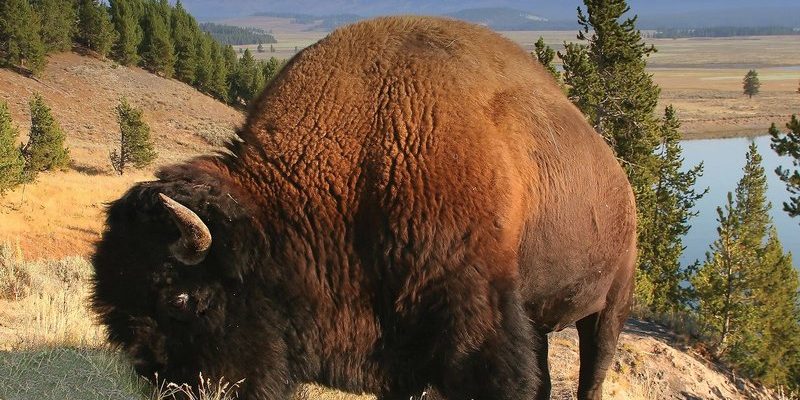
When you’re out in nature, especially in areas where bison roam, it’s essential to understand their behavior. Think of bison like the gentle giants of the plains—they may look calm, but they can quickly become agitated if they feel threatened. So, before you lace up your hiking boots and head off into the wild, let’s dive into the best practices for handling an encounter with these magnificent creatures.
Understanding Bison Behavior
Bison are more than just big animals; they have complex social structures and unique behaviors. These animals can weigh up to 2,000 pounds and stand over 6 feet tall at the shoulder. When you see a bison, you might be tempted to get closer for a photo. However, here’s the thing: bison can be unpredictable.
Their behavior can change based on factors like the weather or the time of year. For example, during breeding season, you might notice the males acting more aggressive. Females with calves are particularly protective, and they can charge if they sense any threat to their young. If you’re observing a bison, it’s important to stay aware of their body language. Look for signs of agitation, like snorting, pawing at the ground, or looking directly at you. These behaviors often signal that the bison feels threatened or uncomfortable.
Keep Your Distance
If you spot a bison in the wild, the golden rule is to stay back. Ideally, keep a distance of at least 25 yards (or about three bus lengths). This distance is not just a suggestion—it’s for your safety. Bison can run up to 35 miles per hour and can easily close that gap before you even realize it.
You might be wondering why it’s so important to maintain this distance. When bison feel cornered or threatened, they’re likely to charge. Instead of approaching the animal, consider using your binoculars or a zoom lens for a closer look. There’s something breathtaking about observing wildlife from afar without disturbing their natural behavior.
What To Do If A Bison Approaches You
So what happens if a bison starts heading in your direction? First, don’t panic. Instead, try to remain calm and keep your distance. Here’s a quick guide on how to handle the situation:
- Stay Still: If the bison is near, becoming a statue can help. In many cases, they’ll pass by without paying you much attention.
- Back Away Slowly: If the bison continues to approach, slowly back away without turning your back on the animal.
- Find Shelter: If possible, find a nearby tree, rock, or any other type of shelter to put between you and the bison.
- Don’t Run: Remember, running can trigger the bison’s instinct to chase. It’s always better to keep your cool.
By following these steps, you can help ensure a safe outcome for both you and the bison.
When to Seek Help
In some cases, you might find yourself in a truly sticky situation. If a bison becomes aggressive or blocks your path, getting help is important. Many national parks have rangers or park staff who are trained to handle wildlife encounters. Here’s what you can do:
- Contact Park Authorities: If you’re in a national park or a wildlife area, report aggressive behavior to a ranger. They can assess the situation and provide assistance.
- Stay Informed: Before heading out, check the park’s website or visitor center for updates on wildlife activity. Knowing if there are recent incidents can prepare you for your adventure.
- Avoid Feeding: Feeding bison—or any wildlife, for that matter—is not only illegal but can lead to dangerous situations. It alters their natural behavior and can make them more aggressive.
Taking these steps can help ensure that your outdoor experience remains enjoyable and safe.
Understanding the Importance of Conservation
American bison are not just fascinating creatures; they also play a significant role in their ecosystems. As a keystone species, they help maintain the health of grasslands, promoting biodiversity. By understanding and respecting bison, we contribute to conservation efforts that protect them and their habitats.
You might be surprised to know that bison were once on the brink of extinction. Today, healthy populations exist, thanks to conservation efforts. When we encounter bison in the wild, it’s a reminder of the importance of preserving nature’s delicate balance.
Summary: Enjoying Nature Responsibly
Encountering an American bison in the wild can be one of those unforgettable experiences. But it’s essential to approach it with respect and knowledge. Always keep your distance, observe their behavior, and know how to handle any situation calmly.
As thrilling as it might be to see these majestic animals up close, remember that your safety—and their well-being—comes first. Making informed choices in the wild helps preserve not only these magnificent creatures but also the harmony of our natural world. So, the next time you’re out exploring, keep these tips in mind, and enjoy the beauty of the great outdoors responsibly!

